The most beautiful pigs, who are reared in a very special way, are carried into the communal houses as a way of celebrating great victories of the past and bringing good luck and prosperity to the people.
Bảo Long
The La Phù Pig Procession Festival is a unique and distinctive traditional festival held in La Phù commune, Hoài Đức district, Hà Nội. The festival takes place annually on the 13th day of the first lunar month to commemorate the village's tutelary deity, Tịnh Quốc Tam Lang.
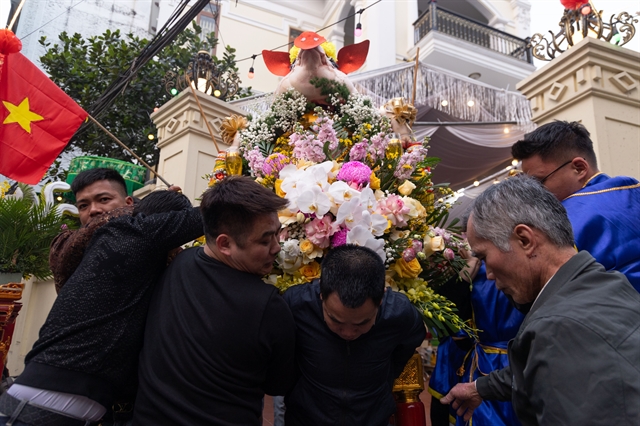
The pigs, weighing up to 200kg, are carefully cared for by families chosen to represent the village, and on the 13th day of the first lunar month, they are offered to the village's tutelary god.
"Every year, each village in the locality holds a ceremony, with the large villages holding two ceremonies, such as Thống Nhất, Hoa Thám, Minh Khai, and Tiền Phong. All 17 villages offer sacrifices to the tutelary deity to pray for national peace and prosperity, the people's well-being and happiness and bountiful harvests. This is a unique festival of the locality that no other place has because the festival is very large and all localities are very enthusiastic about this festival," Nguyen Tien Minh, head of Thong Nhat village, told Viet Nam News.
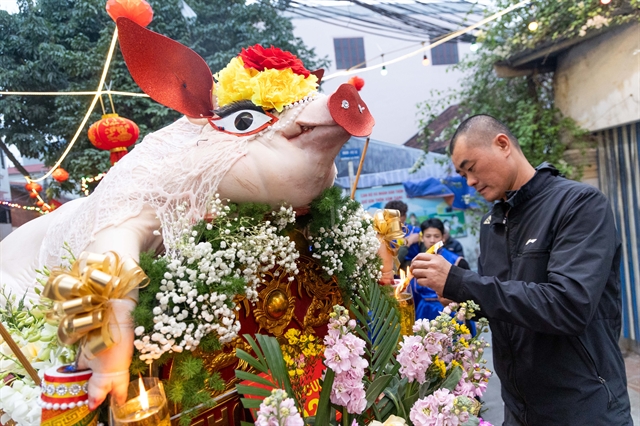
The pigs are decorated, carried on a palanquin before being brought to the communal house for the ceremony.
During the reign of the 6th Hùng Duệ King, Tịnh Quốc Tam Lang showed great bravery and military excellence, fighting against invaders and safeguarding the country's borders. After winning the battle, he often held a pork feast to reward his troops.
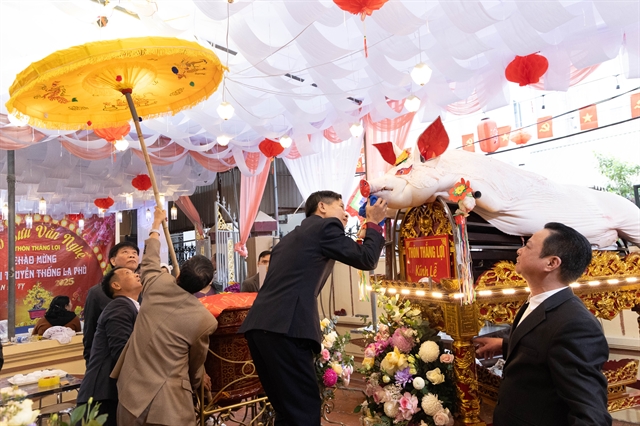
To commemorate the merits of the village's saintly tutelary deity, the people of La Phù established a festival every year, offering pigs as a symbol of honouring their heroes.
Therefore, the selected pigs are not only beautiful in appearance, but also carefully selected for their quality.
The family of Nguyễn Hồng Quang, who was chosen this year to represent Thống Nhất I village explained: "We have to raise them cleanly, not only the pens but also the food must be clean. The pigs eat thin porridge. This is a matter of belief, so we must be very careful. The pigs must be good breeds, we choose beautiful breeds, because the pig is the representative of the village, and every village wants to win a prize, although it is small, but it has great spiritual value."
The festival is an opportunity to connect with the community. During the preparation and organisation of the festival, everyone joins hands and contributes, from choosing pigs and raising pigs to decorating palanquins and preparing offerings. This creates a joyful and united atmosphere throughout the village.
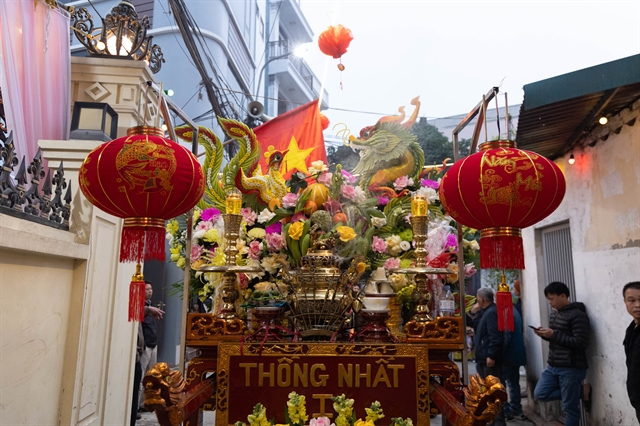
The ceremony and procession were prepared in order, guided by the village elders.
The families chosen to host the sacrificial rituals of the villages are those without any mourning events, with complete families, harmonious couples, with both sons and daughters, and a prosperous and happy life.
"My family wants a more joyful atmosphere, a get-together, and a stronger bond among the villagers, so we organised a banquet," Hồng Quang said.
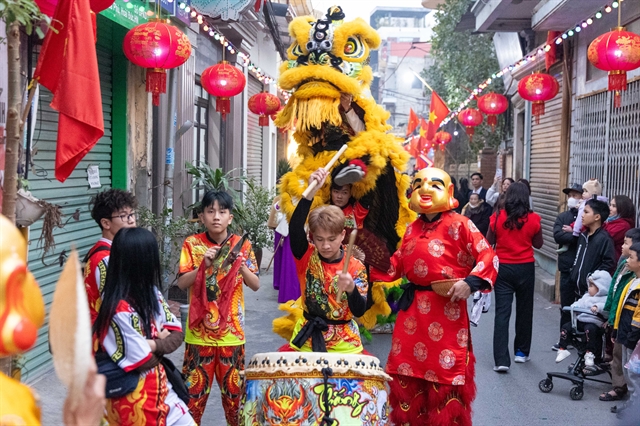
The lion dance troupe leads the ceremonial team. Each village selects lion dance teams with vibrant colours and costumes to lead the group into the communal house.
The pig procession usually has hundreds of participants. At the front are the lion dance troupe, followed by the flag team, the palanquin procession, and then the pig, which is carried by strong, unmarried young men from the community who carry it to the communal house. After being taken into the yard, a ritual is performed and the pig, after being sacrificed, will be 'transformed' by being distributed to the villagers.
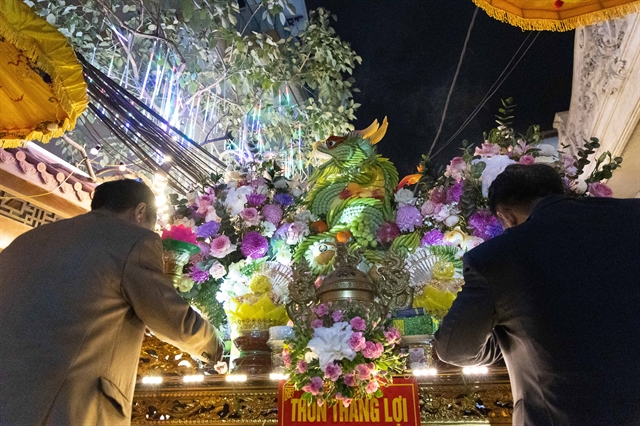
According to custom, the hamlet closest to the village temple will carry the procession first, the farthest will carry the procession later, and they will slowly go to the temple, one hamlet after another.
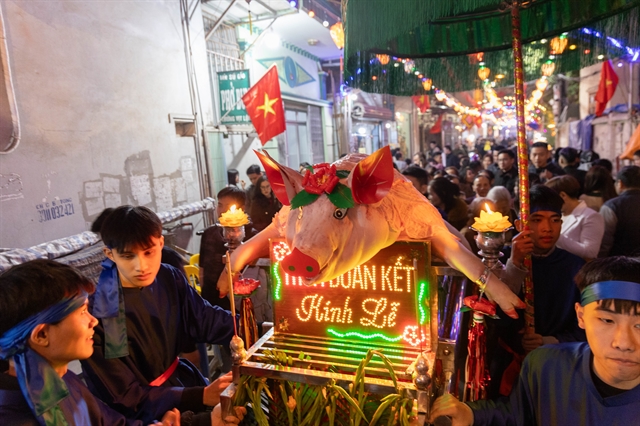
The decorated pigs in the procession have colourful eyes and noses, and a layer of fat is carefully peeled off to be used as a cloak.
This year, hundreds of people from all over the country have come to La Phù to participate in the festival, admire the giant pigs and learn about the unique customs of the local people. The festival becomes an opportunity to promote the traditional cultural beauty of the locality to visitors from all over the country.
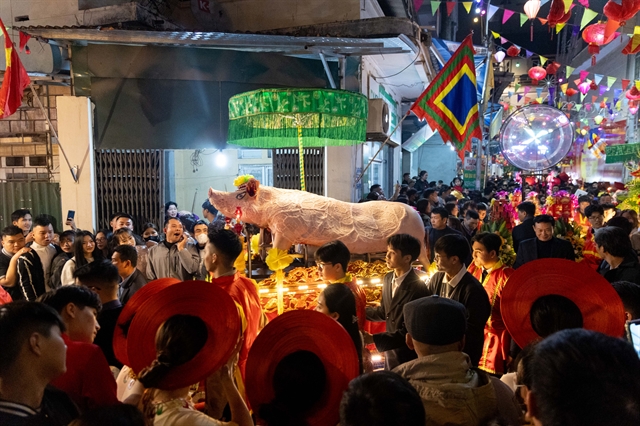
The procession slowly passes through the crowd of locals and tourists who had come to participate.
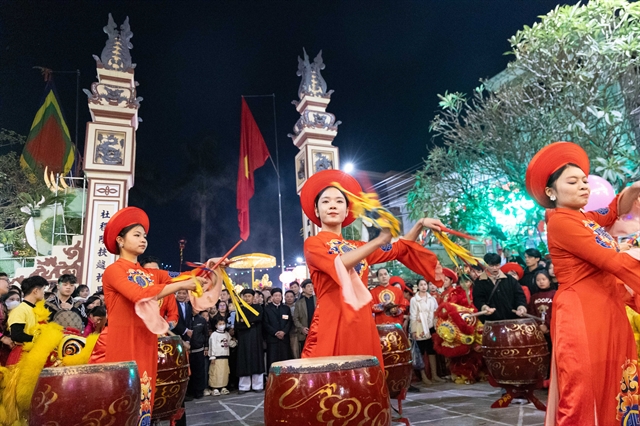
Dances with drums are performed bustlingly as an opening ritual before the pigs are brought into the communal house.

After 9pm, the pigs are carried into the temple.

Six pigs will be chosen for the offering ceremony, while the remaining 11 pigs will be placed in the outer chamber.
The La Phù Pig Procession Festival is a testament to the preservation and promotion of the good traditional cultural values of the Vietnamese people. The festival not only has spiritual significance, but is also a great source of spiritual encouragement, helping people to have more strength to overcome difficulties in life and move towards a better future. VNS